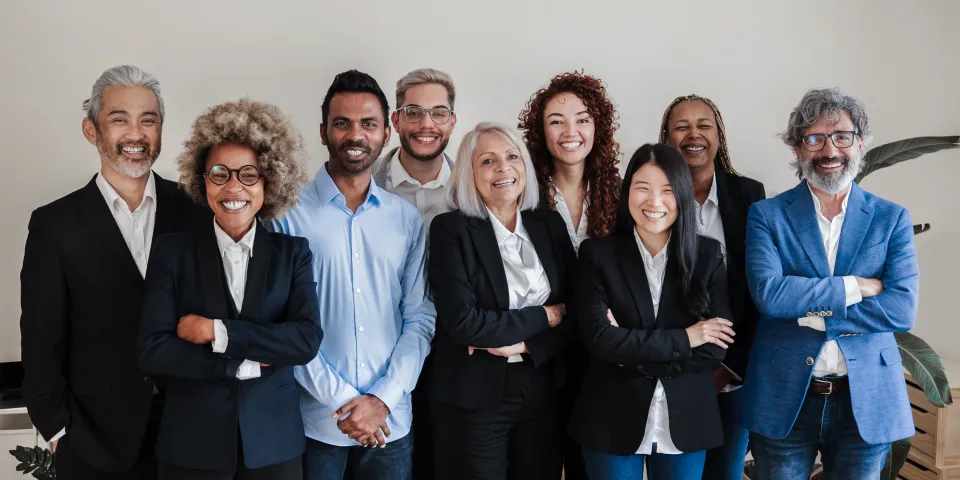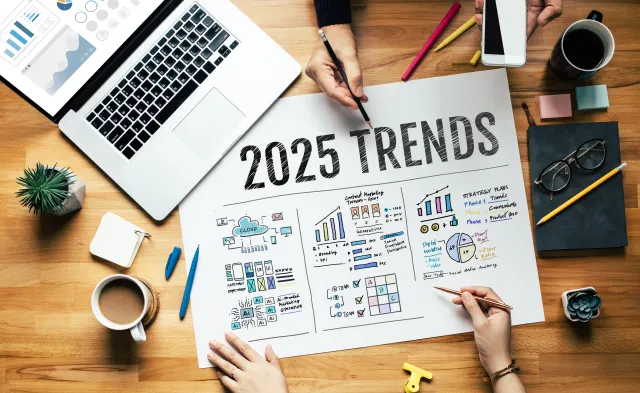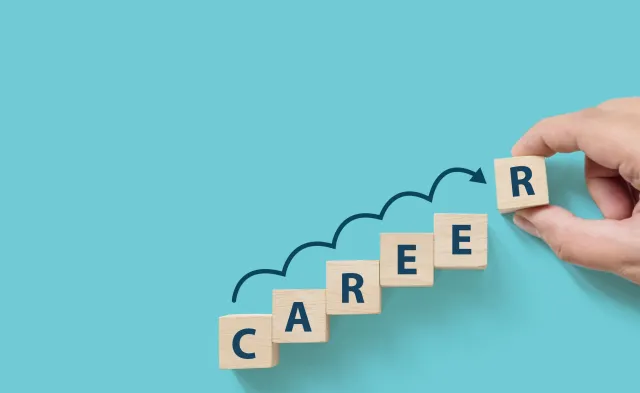Latest
Multi-Generational Workforce
May 16, 2022

If you were on social media circa 2019, you may have heard the dismissive phrase, “OK Boomer.” Younger generations used this to push back on ideas they viewed as condescending from an older generation. According to the New York Times, the retort captured the generational across seemingly every issue from political activism, climate change and social media to technology, privacy and gender identity.
For the first time in recent history, five generations are converging on the workforce at the same time. Not every generation sees eye-to-eye so how does this dichotomy work when you’re at work? While multigenerational workplaces present some obstacles for some employees, this diversity should be celebrated as an opportunity for people to be at a place where all can thrive!
In her latest T.R.U.E. Talk with Terri, “Multi-Generational Workforce,” diversity, equity and inclusion expert, Terri Howard focuses on the distinct differences that highlight each generation and how it impacts the workforce. Howard invited Dan Potterton, Executive Director of Family Enterprises Inc. (FEI) Behavioral Health, and Matthew Gilliam, Crisis Management Associate at FEI, to shed some light on how generations interact with each other and what communication looks like.
What are the different generations in the workforce?
Today's workforce is incredibly diverse especially when it comes to age. Believe it or not, there can be up to five generations present in America's professional landscape and are traditionally broken down and classified based on when people were born.
Although these classifications help to draw distinctions, they are not perfect representations of everyone born during these years. These classifications help make generalizations about the people from these generations and how they may respond in the workforce.
1. Traditionalists (1928-1945)
Traditionalists make up about 3% of today’s workforce and are known for their strong work ethic and formal nature in the workplace. This generation of workers grew up through the Great Depression and World War II, which is why they have a strong sense of teamwork, sacrifice, “make do with what you have” attitude and a respect for authority. Unlike younger generations, they are not as focused on personal career development as they are on the service to the company.
2. Baby Boomers (1946-1964)
Baby Boomers make up a large portion of the U.S. population and about 25% of the workforce. Unlike previous generations in which workers would retire at the traditional age of 65, almost half of the Boomers who are still working say they don’t expect to retire until they are after 65 and another 10% believe that they will never retire.
The typical Baby Boomer employee wants to be loyal to their job and takes a job-focused mindset in the workplace. Because they are career-minded, they are more willing to take risks and challenge the status quo, create innovative workplaces and inspire teams.
3. Generation X (1965-1980)
With all the discussion around Baby Boomers working and Millennials rising in the workforce, Generation X is often overlooked, but that does not make them unimportant. Generation X accounted for 33% of the workforce in 2017. They’re considered a generation of independent individuals who pride themselves on their entrepreneurial spirit so it should surprise a few that according to GlobeNewswire based on data from Sage more than half (55%) of startup founders are Gen Xers.
Generations X serves as a bridge between Baby Boomers and Millennials. They value the traditional ideas of career development yet also value the more relaxed and flexible work environment.
4. Generation Y/Millennials (1981-1996)
According to Pew Research Center, Millennials are the largest generation in the U.S. labor force making up roughly 35% of the workforce. Millennials are the first generation to truly grow up surrounded by new technological advances and are often described as the most educated generation in the workforce. They also represent the fastest-growing segment of the workforce.
Unlike previous generations, they value professional development over loyalty to a company. Generation X employees started the trend of creating relaxed work environments and millennials grew this trend as they entered the workforce. Millennials aren’t afraid to challenge authority or the status quo to create innovative solutions to workplace challenges.
5. Generation Z (1997-2015)
Generation Z (or post-millennial) is just starting to get hired so their impact, while still new and only contributing to about 5% of the workforce, will surely be felt in the coming years. Since many within Generation Z started their professional careers during the pandemic, they value offline relationships and person-to-person interactions. They want authentic employers, flexible work environments, clear directions and transparency about their work.
What are some of the benefits and challenges to having multi-generations share the same space in the workplace?
Potterton has been in the workforce for many years and something that he has personally noticed is the excitement he finds in younger generations. “The younger generations want to be challenged. They want to take on access extra tasks and learn on the job,” Potterton explained. He said that it is refreshing to see people be excited about work. They are also very interested in sharing information, whether it is learning something that has always been done this way or trying something new.
On the other hand, Gilliam self-identifies as a millennial. He drew attention to the differences that technology brings about. Millennials may not have been born with technology at their fingertips, but they are very comfortable using technology, sometimes even explaining technology to older generations. Although technology has changed a lot about how the world interacts with each other, Gilliam explains how it also changes the way different generations think.
“Older generations have an incredible memory. Things were a lot more manual before the birth of technology, so a lot of information must be committed to memory,” Gilliam explained. “Being a millennial, I learned how to remember certain information such as phone numbers and how to look at a map. The next generation has only known technology and is not used to doing things the manual way. I believe the older generation has a lot to offer regarding how to commit things memory or what to do when things break down.”
One of the advantages of the younger generation is their interest in teamwork and problem-solving. The older generation loves to teach and is often found in leadership positions. If businesses can balance these strengths, they could generate better ideas and be more productive.
Are there challenges that arise with these mixed generations present in the workplace?
Unfortunately, there will always be some issues with communication between generations.
Millennials and Generation Z are eager to move and have shorter attention spans. According to Forbes, attention spans are dwindling; the average attention span of a Millennial is 12 seconds and for Gen Zers the average attention span is 8 seconds. Consequently, younger generations will float from project to project, or be succinct in their messaging.
Gilliam explained how he sees this difference, “I can't stay focused for more than 30 minutes to an hour. The expectation for a project completed in a certain amount varies from person to person. I have noticed that people from a different era can sit down and work on a project for two to three hours uninterrupted and be able to push them out.”
Potterton also spoke to these differences, “My generation lived to work rather than the younger generations who work to live.” The older generation was willing to work overtime and give themselves entirely to their company, younger generations are more focused on their lives outside of work.
How can leaders contribute to making sure that everyone, regardless of what generation they're from, feels a sense of belonging in the workplace?
According to the SHRM Foundation, while companies have recently renewed their diversity efforts, only 8% of organizations include age as part of their Diversity, Equity and Inclusion (DEI) strategy. Generational differences, like any other type of diversity in a workplace, require an openness to have conversations, even if the conversations are uncomfortable. Leaders need to put away preconceived notions and let themselves be open to differences and change.
Understanding the difference between different generations and recognizing that there are processes that are different, and people are different is a huge step in the right direction. Instead of focusing on how our differences set us apart from each other, generations should focus on how our differences can bring us together.
Learn More About Our Career Programs
Bureau of Labor Statistics (BLS), U.S. Department of Labor, Occupational Employment and Wage Statistics 2023 / Occupational Outlook Handbook 2022. BLS estimates do not represent entry-level wages and/or salaries. Multiple factors, including prior experience, age, geography market in which you want to work and degree field, will affect career outcomes and earnings. Herzing neither represents that its graduates will earn the average salaries calculated by BLS for a particular job nor guarantees that graduation from its program will result in a job, promotion, salary increase or other career growth.
Latest
Recent Blog Posts
Subscribe to our Newsletter
Get the latest news you need to know, from study hacks to interview tips to career advancement. Have it delivered right to your inbox biweekly.








